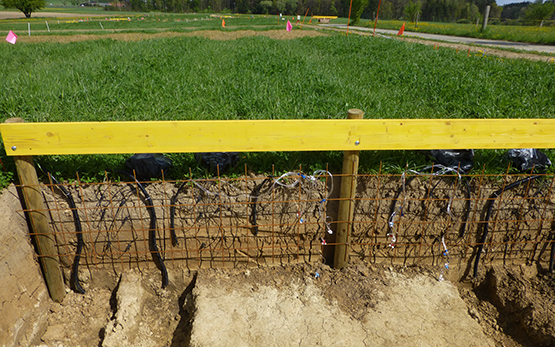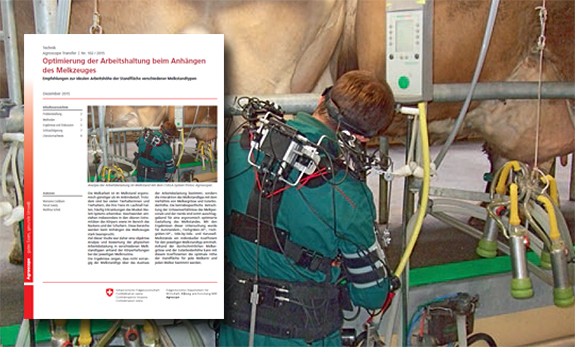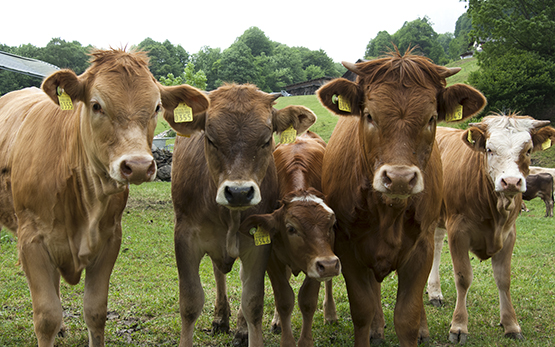Zeitler-Feicht M. H., Hartmann E., Erhard M. H., Baumgartner M.
Which affiliative behaviour can be used as a valid, reliable and feasible indicator of positive welfare in horse husbandry?
Applied Animal Behaviour Science, 273, 2024, 1-11.
Baumgartner M., Krüger L., Kuhnke S., Erhard M. H., Zeitler-Feicht M. H.
Bewertung der Tiergerechtheit und Umweltwirkungen von Pferdehaltungen.
Der Praktische Tierarzt, 105, (4), 2024, 364-377.
Heikkilä U., Ueda K., Gobbo Oliveira Erünlü N., Baumgartner M., Cockburn M., Bachmann I., Roig-Pons M., Rieder S.
Social network analysis of horses inferred from sensor ear tag and GPS-logger data.
Dans: EAAP 74 Annual Meeting. 26 Augus, Lyon. 2023, 652.
Heikkila U., Ueda K., Baumgartner M., Cockburn M., Bachmann I., Roig-Pons M., Rieder S.
Social network analysis of horses inferred from sensor ear tag and GPS-logger data.
Dans: EAAP 74 Annual Meeting. 26 August, Lyon. 2023, 1.
Baumgartner M.
Comment éviter les bagarres autour des râteliers à foin ?
Der Freiberger = Le Franches-Montagnes, 261, (Septembre), 2023, 14-15.
autres langues: allemand
Baumgartner M.
Un aménagement bien pensé de l'enclos pour les chevaux (partie 2).
Der Freiberger = Le Franches-Montagnes, 260, (Août), 2023, 22-23.
autres langues: allemand
Baumgartner M., Krüger L., Zeitler-Feicht M.H., Bachmann I.
How horse-friendly are our stables?: Requirements vs. practice.
Dans: Research days - Horse Health and Grassland. 21 Sep, Ed. Sandgrueb Foundation, 2023, 40-41.
Baumgartner M., Krüger L., Zeitler-Feicht M.H., Bachmann I.
How horse-friendly are our stables?: Requirements vs. practice.
Dans: Research Days - Horse Health and Grassland - Annual Meeting of the Sandgrueb Foundation research partners. 21 September, Szepalma. 2023, 1.
Hiltebrand C., Roig-Pons M., Baumgartner M., Cockburn M., Doetterl S., Bachmann I., Keller T., Briefer S., Würbel H., Gmel A., Pauler C., Schneider M. K., Nasser R.
Site expérimental de Saint-Aubin : Projets de recherche en cours.
Dans: Jeudi au Haras. 20 juillet, Avenches. 2023, 1.
autres langues: allemand
Baumgartner M., Krüger L., Erhard M. H., Zeitler-Feicht M.H.
Forschung zum Tierschutz bei Pferden: Research on animal welfare in horses.
Dans: Michael Erhard Symposium: Tierschutz altert nicht - Wissenschaft für mehr Tierschutz. 28. Juli, Ed. Kuratorium für Technik und Bauwesen in der Landwirtschaft e. V. (KTBL), Darmstadt. 2023, 67-76.
Baumgartner M.
Les chevaux ont besoin de mouvement pour rester en bonne santé (partie 1).
Der Freiberger = Le Franches-Montagnes, 259, 2023, 26-27.
autres langues: allemand
Ellerbrock C. N., Zeitler-Feicht M., Cockburn M., Erhard M.H., Baumgartner M.
Urinating in transponder-controlled feeding stations: Analysis of an undesirable behaviour in horses.
Applied Animal Behaviour Science, 266, 2023, 1-10.
Baumgartner M., Hartmann E., Erhard M. H., Zeitler-Feicht M. H.
Welche affiliativen Verhaltensweisen eignen sich als valider, reliabler und praktikabler Indikator für Wohlbefinden in der Pferdehaltung?
Agroscope Science, 133, 2023, 24.
Baumgartner M., Erhard M. H., Zeitler-Feicht M. H.
Welches Tier-Fressplatzverhältnis an zeitgesteuerten Heuraufen ist tiergerecht?: Explorative Feldstudie zu Stressreaktionen von Pferden.
Agroscope Science, 133, 2023, 34-35.
Ellerbrock C., Zeitler-Feicht M. H., Cockburn M., Erhard M. H., Baumgartner M.
Analyse des unerwünschten Verhaltens “Urinabsatz in Abrufautomaten“ von Pferden.
Agroscope Science, 133, 2023, 36-37.
Kuhnke S., Baumgartner M.
Heuraufen müssen sicher sein.
Rheinische Bauernzeitung, 21, 2023, 22-23.
Baumgartner M., Erhard M. H., Zeitler-Feicht M. H.
Which animal-to-feeding-place ratio at time-controlled hay racks is animal appropriate?: Preliminary analysis of stress responses of horses.
Frontiers in Veterinary Science, 9, 2023, 1-10.
Baumgartner M., Krüger L.
BestTUPferd - Ein Tool zur Verbesserung des Tierschutzes in der Pferdehaltung.
Deutsches Tierärzteblatt, 71, (2), 2023, 174-178.
Ellerbrock C.N., Zeitler-Feicht M.H., Erhard M.H., Baumgartner M.
Analyse des unerwünschten Verhaltens „Urinabsatz in Abrufautomaten“ von Pferden.
Dans: Aktelle Arbeiten zur artgemässen Tierhaltung / KTBL Schrift 11530. 24. November, Ed. KTBL, Darmstadt. 2022, 229-238.
Baumgartner M., Krüger L., Zeitler-Feicht M.H.
Spezifische Verhaltensweisen von Pferden im Kontext von gutem und schlechtem Befinden: Analyse mittels BestTUPferd.
Dans: DVG-Vet-Congress: Verhaltensmedizin & Bissprävention. 14. Oktober, Ed. Deutsche Veterinärmedizinische Gesellschaft e.V. DVG Service GmbH, Berlin (Deutschland). 2022, 13-18.








